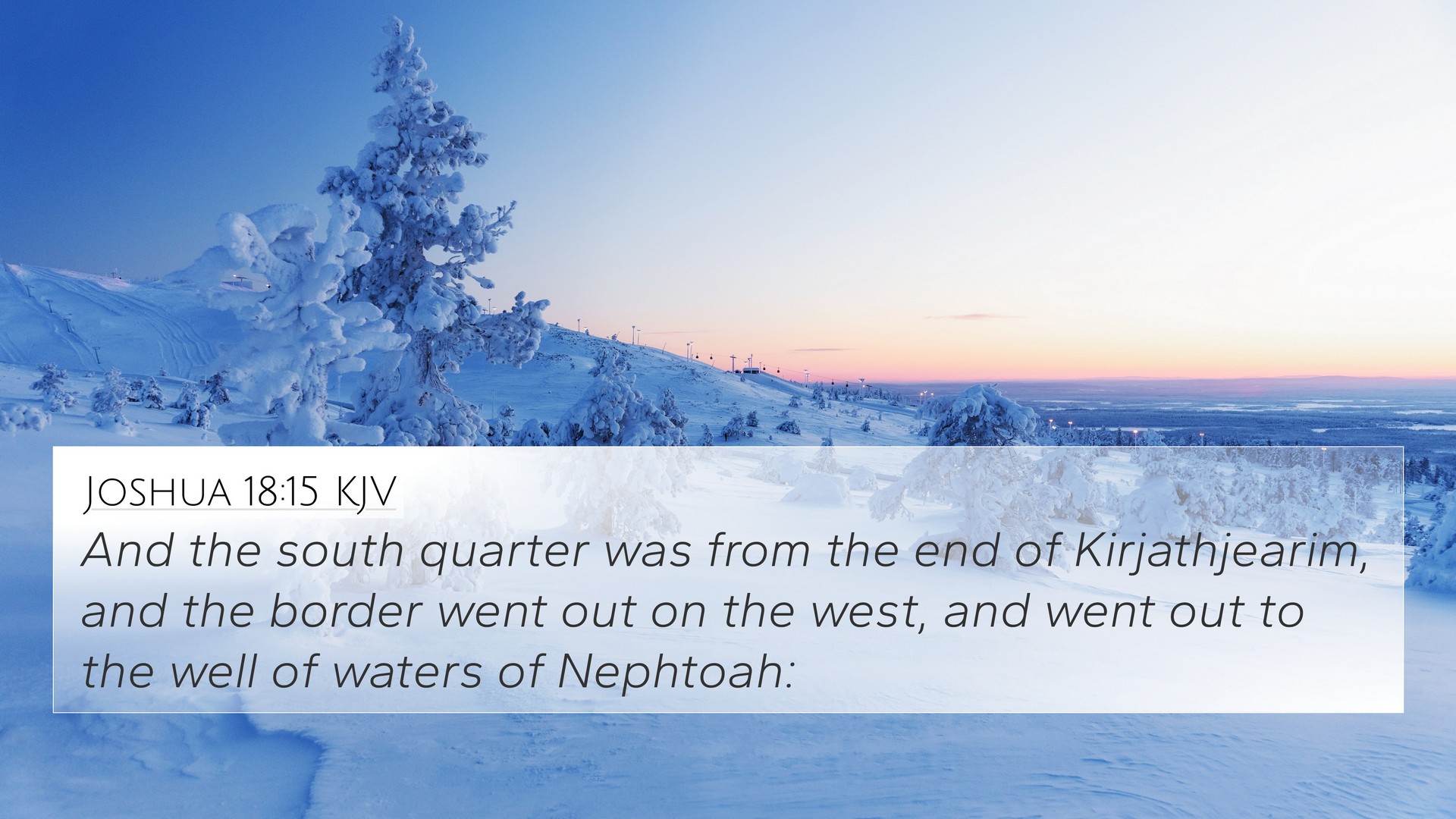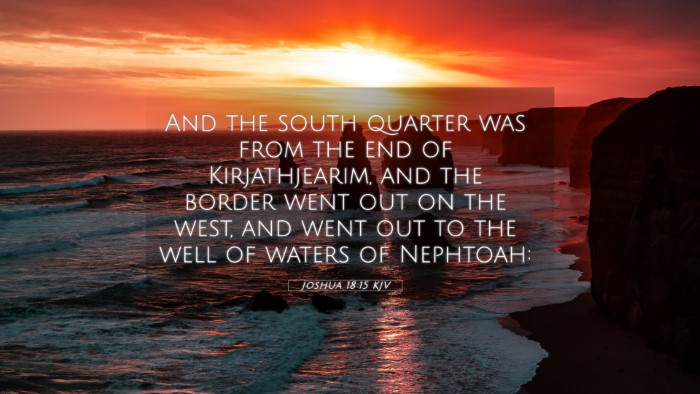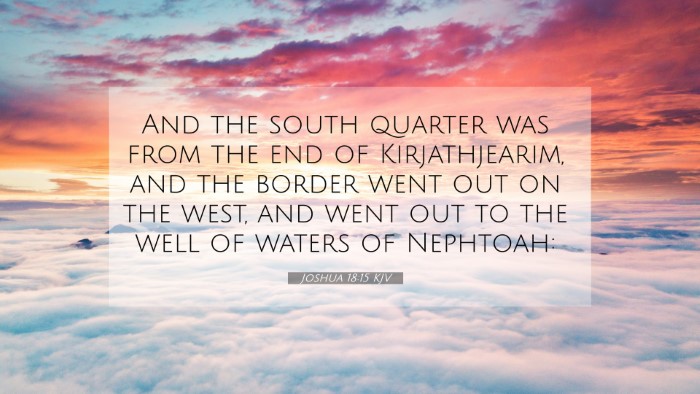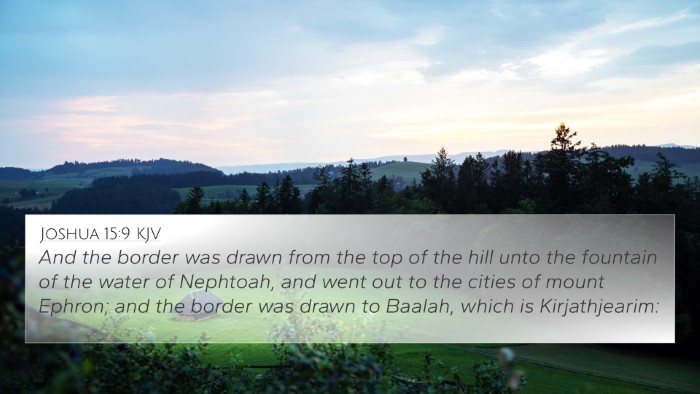Meaning and Interpretation of Joshua 18:15
Joshua 18:15 states:
"And the south side was from the end of Kirjathjearim, and the border went out on the west, and went out to the fountain of the waters of Nephtoah."
Summary of the Verse
This verse describes the geographical boundaries of the land allocation to the tribe of Judah during the conquest of Canaan. The specific mention of Kirjathjearim as a starting point indicates the precision in God’s providence regarding the distribution of land among the tribes of Israel.
Contextual Understanding
Joshua is a key book in the Old Testament, detailing the Israelites' entry into the Promised Land and the conquest of Canaan. In this chapter, God commands Joshua to divide the land among the remaining tribes. Thus, Joshua 18:15 is part of a larger section detailing Israel's inheritance in Canaan.
Thematic Connections and Cross-References
Understanding Joshua 18:15 involves recognizing how this verse connects with broader biblical themes and other scriptures. Below are significant cross-references:
- Joshua 14:6-9: The grant of land to Caleb illustrates the fulfillment of God’s promise.
- Joshua 15:1-12: The entirety of Judah’s inheritance is detailed, providing context for the mentioned borders.
- Numbers 34:1-12: The definition of the Promised Land boundaries is established, relevant for understanding land distribution.
- Deuteronomy 3:12-20: The allocation of land east of the Jordan River sets precedent for the organization of territories.
- Psalm 78:68-69: Referring to God choosing the tribe of Judah, connecting to His sovereign plan in Israel's history.
- Galatians 3:29: A New Testament connection illustrating that believers in Christ receive the promises given to Abraham.
- Revelation 21:10-14: The metaphorical significance of the tribes in the New Jerusalem brings this historical distribution into eschatological perspective.
Exegetical Insights
Matthew Henry comments on the clarity and detail with which the Lord delineates the boundaries of land inheritance, highlighting God's meticulous nature in fulfilling promises. Adam Clarke suggests that this specificity serves as both an historical record and theological affirmation of God's covenant with Israel.
Practical Applications
The precise outlining of borders serves as a reminder of God's organized plan in both the natural and spiritual realms. Believers can derive assurance that God is intentional about their inheritance, not just physically in Israel, but spiritually through Christ.
Tools for Bible Cross-Referencing
To explore these connections further, utilizing a Bible concordance or Bible cross-reference guide can enhance your study. Tools for Bible cross-referencing aid in identifying links between different scriptures and can deepen understanding of inter-Biblical dialogue.
Concluding Thoughts
Understanding Joshua 18:15 in the context of God’s promises and the allotment of land reveals the working of divine providence in history. It encourages believers to explore further connections and insights throughout the scriptures. Utilizing a structured cross-reference system can enrich personal study and provide a broader theological framework.



